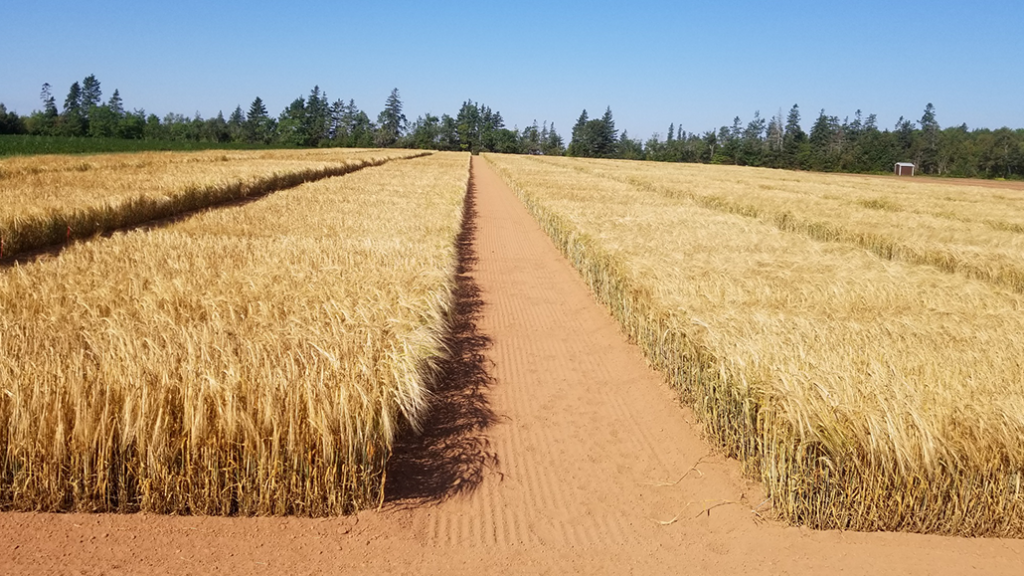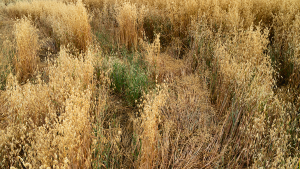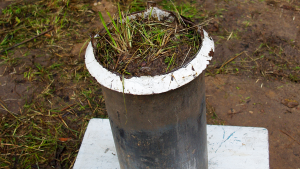Seed development: barley
BREEDING THE RIGHT CHARACTERISTICS

DR. RAJA KHANAL, RESEARCH scientist in barley breeding and genomics with Agriculture and Agri-Food Canada, aims to develop new barley varieties that are high yielding, have improved resistance to Fusarium head blight (FHB), and have good standability. In Khanal’s program, there is a focus on varieties that will excel in eastern Canada.
The barley breeding process has three main steps. The first step is crossing two parents; the aim is to find the progenies better than the parents. The second step of the breeding process is inbreeding the progenies to have homozygous offspring. Khanal uses a single-seed descent method with a speed breeding technique based on manipulation of photoperiod length and temperature to accelerate the inbreeding cycles in the greenhouse. With this breeding approach, Khanal produces up to four generations per year. As they progress through the generations, the aim is for more and more homozygous plants, taking one seed from each plant and moving on to the next generation.
After the greenhouse, they will head to the field. The seeds from each barley line from the fourth generation will be planted in a row. From an original 50 crosses, they will have 10,000 individual lines, plus some checks that are planted in rows. During the selection process, Khanal looks for plant height, early maturing, and resistance to natural diseases. Out of the 10,000 lines, roughly 2,000 lines will progress into the next generation.
From here a mini-plot will be planted in the next growing season. Plots will be planted with three rows each, so better assessments can be made, while looking at agronomic and yield data along with disease and lodging. From here around 400 lines will be selected to be entered into preliminary yield trials, which will be planted in two different locations and be compared to the provincial check, while also looking at genetics by environment interactions. At this point, the barley will also be entered into disease screening at the FHB nursery, which is a major disease for barley in eastern Canada.
From the 400 lines, 70 to 80 lines will go the advanced yield trials that run across multiple locations across Ontario, the maritime region, Quebec, and one location in western Canada. With these advanced yield tests, Khanal has a better assessment of the promising lines in different environments for their stability and yield assessment. These lines are again evaluated at the disease nursery for FHB screening. Khanal selects only eight to 10 lines, out of 70 to 80 lines, that are entered into the registration process where they will be planted again across the region to get support for the registration. Support is requested from the Ontario Cereal Crop Committee (OCCC). Once the variety is supported by the OCCC, and committees in other provinces, the variety licensing process will begin. SeCan, as the main funder of the program, is provided the first option to use the variety.
TIMING
Khanal shared that the timing is very critical to develop and commercialize a barley variety. To supply the breeder seeds in time to the licensing company, potential lines in the registration process will be grown into the greenhouse to purify them and then back out to the field to increase the breeder seed, in order to get more seed, faster.
“It takes 10 to 12 years to get a variety registered, and then another two to three years to multiply the seed before it can head to growers,” Khanal says.
One of Khanal’s goals is to make the barley breeding program faster and more efficient so that farmers can have new varieties earlier. From 2018, he began to utilize the “speed breeding approach” to accelerate the early generation materials in the greenhouse. With this approach, he aims to develop a new variety within 7 to 8 years as compared to ten to twelve years. “Hopefully in 2024 or 2025 there will be a new variety from this method,” Khanal expects.
Khanal has access to good germplasm from different barley breeding programs within Canada and internationally. Recently, he has developed good FHB resistance lines in both 2-row and 6-row type. In Ontario, most of the barley grown is used as feed so most of his time is spent on feed barley variety development.
In the last few years, the popularity of craft breweries and the ‘buy local’ movement has created an opportunity for a higher-value market for barley producers in the region.
“Malting barley can be a challenge to grow in eastern Canada, mainly because of the high concentration of deoxynivalenol (DON) producing mycotoxin due to FHB and a lack of locally adapted varieties,” says Khanal.
That is why his program focuses on developing malting barley varieties adapted to eastern Canada, with low DON accumulation. He also spends some time on food barley, specifically breeding for high beta-glucan and high protein attributes.
Another option for seed producers, other than purchasing varieties created in Ontario, is to scour the world looking for varieties that may do well in a certain geography and test them to see how it goes,” says Quentin Martin, Cribit Seeds.
At Cribit Seeds, in conjunction with SeCan, they may bring in material from western provinces or Europe to screen varieties here. If there is a solid option, it will be selected and placed into the registration process. Currently, the variety registration process is being looked at.
“This comprehensive review is being done by the Canadian Food Inspection Agency which oversees the Variety Registration Office. It has been 25 years since there has been this level of review of the seed regulations,” notes Martin.
There are some challenges in that the variety registration process is similar to the registration for plant breeders’ rights. There are hopes that the processes may be able to merge in some ways.
MARKETING
Once a variety is ready for the marketplace, an agreement between the breeder and seed company is created. The seed company will receive breeder seed and sometimes even foundation seed to help with bulking up for farmer use. This process of creating enough seed for sales can take one to two years.
Many small production crops, such as barley, oats, and non-genetically modified (GM) soybeans, still face production challenges and seed treatments are an important management tool.
One barley variety, in particular, is susceptible to true loose smut. By assessing trials that Cribit Seeds runs, Martin and his team were able to determine that a specific fungicide manages the disease better than others, and for that reason going forward the variety is treated differently than others in the lineup.
“When a good variety is available, you need to keep it useable for as long as possible,” says Martin. “If we don’t respond properly, we can lose a variety. There is a shallow gene pool of available genetics, and we need to nurture the varieties as best we can.”
When they screen for new lines, one replication will automatically be done without seed treatment, to see if the germplasm is susceptible to disease. The goal is to offer the best options for farmers to grow a successful crop.
Khanal’s research is part of the National Barley Cluster, with support from the Canadian Agricultural Partnership (CAP) AgriScience Program, and industry support from the Canadian Field Crop Research Alliance (CFCRA) and the Brewing and Malting Barley Research Institute (BMBRI).
Laura Ferrier is an agronomist with Grain Farmers of Ontario. •










